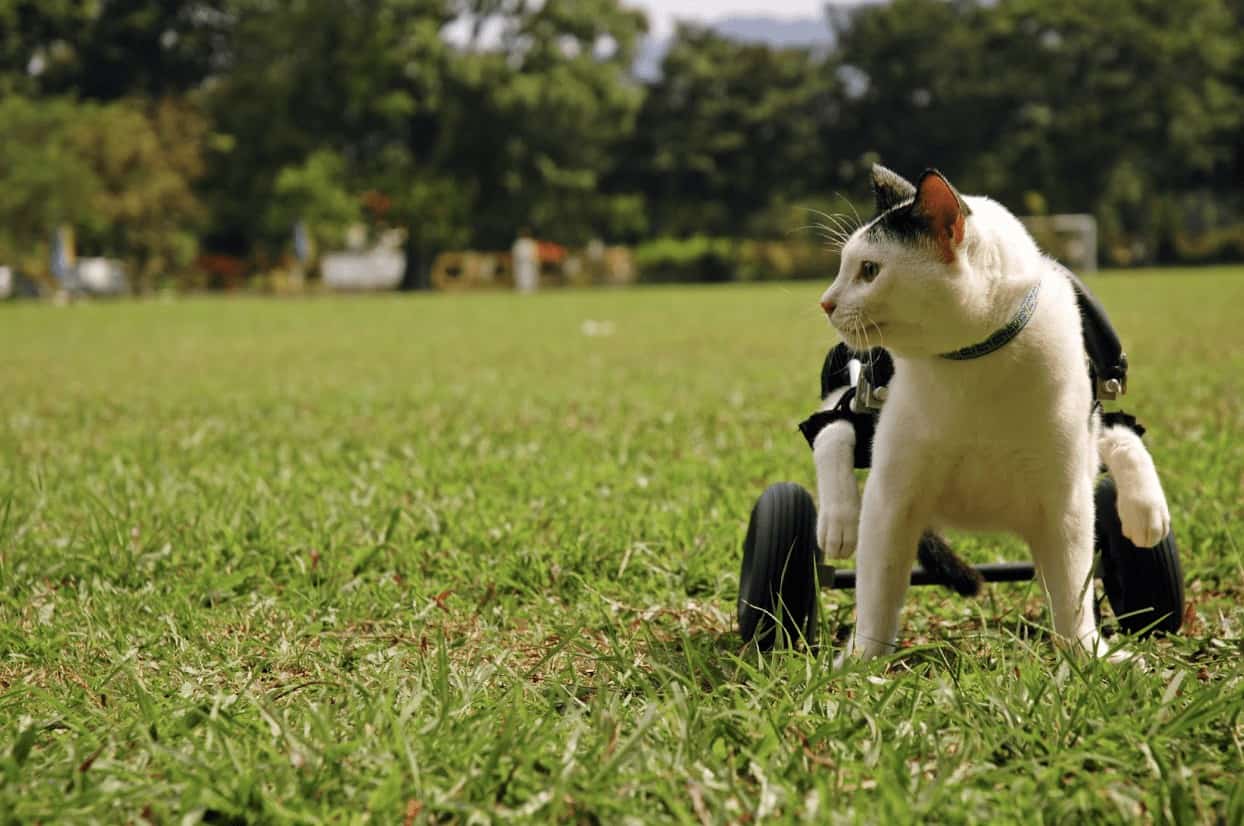Help with Disabled Cats

Caring for disabled cats can be a rewarding experience. Too often special needs felines are ignored by potential adopters at shelters, so you may actually be saving an animal’s life by choosing to take it under your care when others don’t. In addition, taking care of disabled cats can teach owners patience and compassion.
Some cats are born with conditions that require special care, while others get sick or injured, resulting in lifelong disabilities. There are certainly general care tips that apply across all areas of need. You may need in a variety of instances to deal with incontinence, for example, which may mean using diapers for your cat or helping them to the litter box. You might also have to help your cat groom or assist them with eating. And almost all disabilities will require patience. But some special needs require specific forms of care, so it is perhaps useful to consider the more common types of needs and the care tips specific to them.
Missing or injured limbs
- You can purchase wheelchairs for either the front or rear limbs to allow your cat to move around the house.
- Harnesses are a good way to assist your animal with difficult obstacles such as small steps, and they are a comfortable and easy way to transport them around your home if they have severe trouble moving.
- Keep your cat inside to keep them safe from outdoor threats and obstacles.
- You can make minor changes to your home, such as raising water bowls and food dishes or putting in small ramps where there are rises.
Feline cerebellar hypoplasia
- This neurological disorder, also known as wobbly cat syndrome, affects balance and coordination.
- Don’t declaw these cats since jumping is difficult. They must develop good climbing skills to adapt.
- Keep the cat indoors at all times, but provide ample toys to keep them mentally active.
- Add mats in tiled or other hard floor areas to give your cat traction.
- Put up baby gates to restrict access to steps and other areas where your feline might be injured if they fall.
- Raise food and water dishes to prevent the need for the animal to bend over.
Deaf Cats
- Try not to approach your cat from behind which may startle them. Light stomping can signal your presence near them through vibrations.
- Touch is particularly soothing to deaf animals so taking time each day to stroke and groom them can be quite comforting.
- Deaf cats can learn basic hand signals that make them aware that you’re calling them or you can use a flashlight to signal them visually of your presence.
- To wake your deaf animal, try touching the floor or place near them rather than touching the animal directly.
Blind Cats
- Create a safe area with food, litter, and bedding where the animal knows its surroundings.
- Try not to change furniture arrangements or leave objects that act as unexpected obstacles.
- Keep your animal indoors.
- Make sure the animal is microchipped in case it escapes.
- You can experiment with scent markings to tell your cat what area it’s in. For example, marking the entrance to the kitchen with cinnamon while the hallway to the bedroom is marked with rosemary.
Here is a simple guide to know how often you should bring your cat to the vet.
–
Ivan Young is a writer in partnership with pet mobility specialists, Walkin’ Pets.



